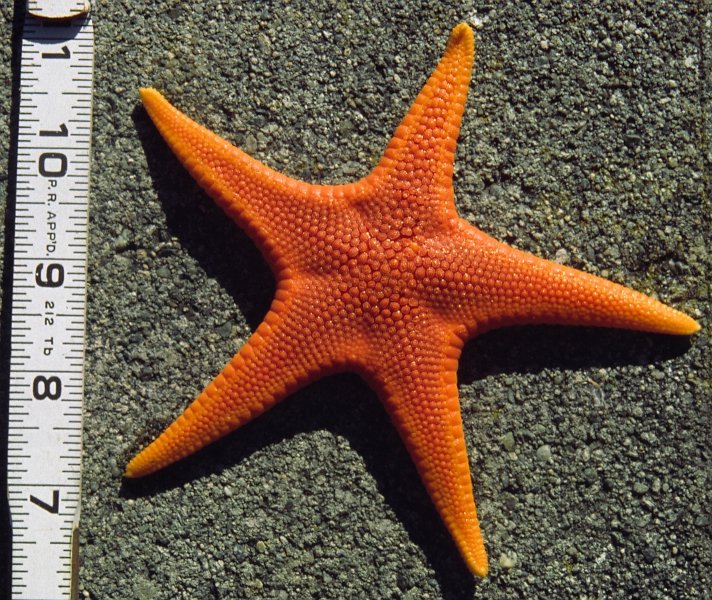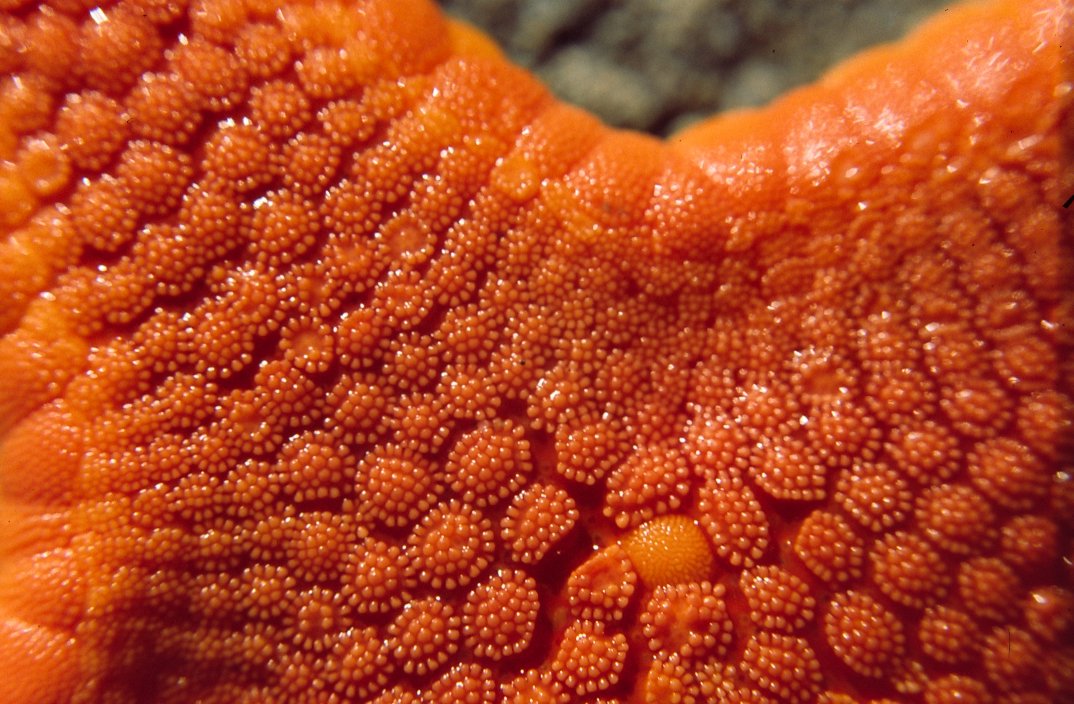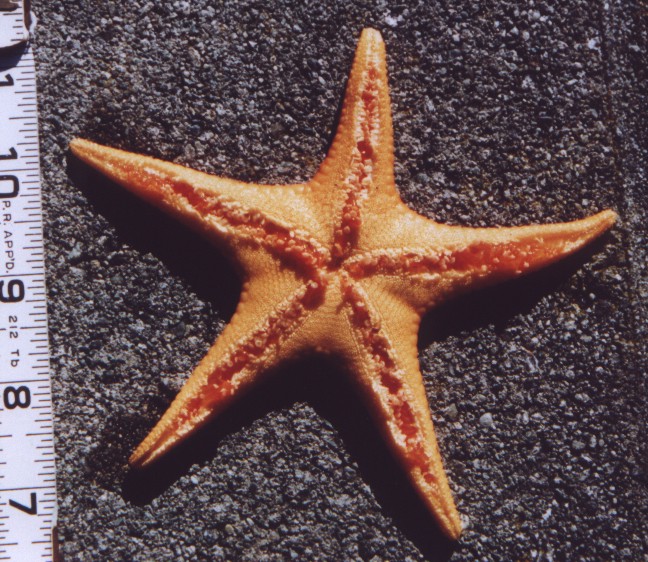Mediaster aequalis Stimpson, 1857Common name(s): Vermilion star, Red sea star |
|
| Synonyms: |  |
| Phylum Echinodermata
Class Asteroidea Order Valvatida Suborder Granulosina Family Goniasteridae |
|
| Mediaster aequalis from 100 m depth, San Juan Channel | |
| (Photo by: Dave Cowles, July 2000) | |
How to Distinguish from Similar Species: Pteraster tesselatus, Dermasterias imbricata, and Asterina miniata have similar shapes but do not have the large marginal plates. The aboral surface of Asterina miniata has ossicles but they are crescent-shaped. Pteraster tesselatus and Dermasterias imbricata have a smooth aboral surface.
Geographical Range: Chignik Bay, Alaska to Baja California
Depth Range: Low intertidal to 503 meters. In our area almost exclusively subtidal (deeper than 15 m). May be seen in fairly shallow, protected waters.
Habitat: Varies. Especially on rocky areas.
Biology/Natural History: An omnivorous predator. Prey include sponges, bryozoans, sea pens,tunicates such as Aplidium californicum and Corella spp., algae, and detritus. Predators include the seastar Solaster dawsoni. Moves fairly fast for a seastar, up to 40 cm/minute. May have an internal parasitic barnacle Dendrogaster sp. In British Columbia spawns from March to May. Juveniles often congregate subtidally among tubes of the tubedwelling polychaete Phyllochaetopterus prolifica.
| Return to: | |||
| Main Page | Alphabetic Index | Systematic Index | Glossary |
References:
Dichotomous Keys:Flora and Fairbanks, 1966
Kozloff 1987, 1996
Smith and Carlton, 1975
General References:
Gotshall
and Laurent, 1979
Kozloff,
1993
O'Clair
and O'Clair, 1998
Scientific Articles:
Emlet, Richard B., 1994. Body forms and patterns of ciliation in nonfeeding larvae of echinoderms: functional solutions to swimming in the plankton? American Zoologist 34: pp. 570-585
Knott, K. Emily, and Gregory A. Wray, 2000. Controversy and consensus
in Asteroid systematics: new insights to Ordinal and Familial
relationships. American Zoologist 40:3 pp. 382-392
McEdward,
Larry R. and Benjamin G. Miner, 2006. Estimation
and interpretation
of egg provisioning in marine invertebrates. Integrative and
Comparative
Biology 46:3 pp 224-232
General Notes and Observations: Locations, abundances, unusual behaviors:

Closeup of the aboral surface of Mediaster aequalis. Note the round clusters of ossicles and the madreporite. Photo by Dave Cowles, July 2000

A view of the underside. Photo by Dave Cowles, July 2000
Authors and Editors of Page:
Dave Cowles (2005): Created original page